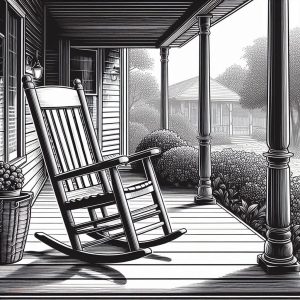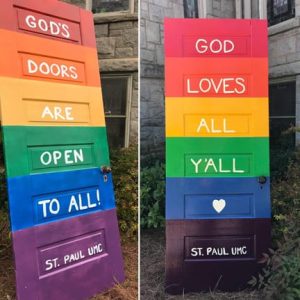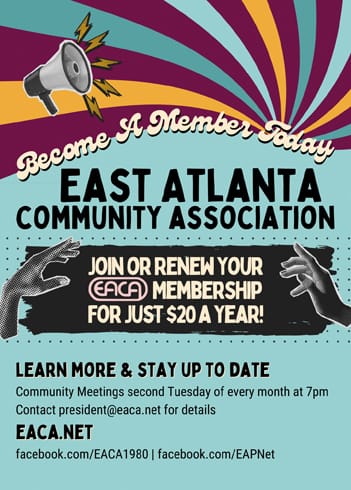By Wayne L. Shannon, Urban Forestry Management, LLC
Urban centers are challenged with a constantly shifting paradigm regarding development versus conservation. Economic, demographic, and environmental factors pressure policy makers to respond within budgetary constraints and plan out a future course of acceptable action governing stakeholders. The primary stakeholders in this arena are local voters, property owners, developers, city governments, state agencies, and the federal government. Local voters influence who is in office, and what decisions are ultimately put at the forefront of policy. Developers provide housing and commercial real estate inventory for growth and renovate sites in need of restoration. State agencies that govern environmental and watershed concerns are concerned with excess run-off, increased heat island impact from urban centers, and air pollution mitigation. Federal agencies such as the U.S. Forest Service are concerned with tree conditions in larger forest lands outside of urban areas.
Increasingly, the cost and speed of permitting tree removals has become a concern for builders. Often the delay and costs associated with tree removals for builders, is unexpected, which adds time to the project and results in unbudgeted upfront permitting costs. Homeowners who desire a tree removal in the city of Atlanta are required to comply with a process that in some cases, such as a site plan permit process, may takes weeks to complete. In other cases, as with a dead/dying/hazardous tree permit application, the process is quick and may take less than 24 hours to file and have inspected, depending on Arborist workload.
Various tree ordinances govern, in a sovereign fashion, the multitude of local governments under a state-level government. There are also overarching institutions, such as the International Society of Arboriculture, which provides both environmental and professional ethics guidelines in regard to tree care. Ultimately, it is the local ordinance that carries the enforcement power, the burden of cost associated with this, and the financial collection and disbursement of funds collect from those subjected to tree ordinance penalties.
Municipalities are faced with the following concerns: voter and tax payer interests, and decision making regarding short-term and long-term environmental and developmental planning. Within this general area lie the trade-offs made for getting results toward an accepted performance metric, such as a percentage of tree cover. Another performance measure may be a comparison of revenue collections, costs of environmental infrastructure procurement (greenspace), and long-term protection of residential and commercial sites with minimum levels of tree canopy coverage. These decisions become an act of balancing the less environmentally acceptable but higher revenue-generating development with more sustainable urban green spaces.
Benefits of trees
Trees provide more benefits than simply natural air screeners, although, if you were to invent a vacuum cleaner for the air, the tree would be beyond our technical abilities with current technologies available. Trees have a natural way of adapting to fit various soil, sunlight, and moisture conditions. Trees modify ranges when climates change, pushing forward, and retreating as conditions cause success and failure within various species of woody plants. This natural ability to adapt and fill niches allows the tree canopy within urban settings to continually flourish, as long as they are provided with a mechanism for survival and propagation. Soil conditions, drainage, lighting, root zone space, and protection from mechanical injury are some basic conditions that allow trees to thrive in an urban forest. After these basic conditions are met, trees have the ability to more or less take care of themselves, unless they need to be pruned off of infrastructure, which is a trade-off for enjoying the benefits.
Pruning of trees
This can include utility and roadway clearance by public entities. Public entities also act to protect the public from tree hazards, often mitigating risk of failure through pruning, or responding to tree failures with tree removals. Private property pruning performed in the private marketplace, for private interests is a large part of the urban forest maintenance activity. Private interests include protection of private property, increased lighting on yards or gardens, roof clearance, pest control, or aesthetics.
Private activity is governed by the local tree ordinance of the municipality or institution that has jurisdiction over the geographical space in question. Inside I-285, there are multiple jurisdictions that share governance of the urban forest. The overlap of different ordinances within a small geographical area creates a mesh of transaction costs that are sometimes complicated for professionals and citizens to navigate. Exactly how much trees are worth seems to be the general question within each ordinance, at least from most homeowners’ and professionals’ perspectives. How much will it cost to get the tree removed, legally, or how is a tree to be removed legally, seems to be the most pressing concern by most parties that are engaged in impacting trees (builders), or being impacted by trees (homeowners).
There is a lack of cooperation and cohesion between community tree ordinances, with a lack of bridging, overlap, or sharing of ideas and values. This is a weakness, that indicates sovereignty and individual preferences of municipalities as well. A cohesive ordinance between all municipalities, at least in part, would provide greater compliance, and potentially more abidance by the community, as well as reduced transaction and enforcement costs. A big issue with multiple ordinances is lack of understanding by professional builders, which increases permitting time and cost of building, ultimately adding cost to homes. Slowing down the removal process does keep the tree removals down, and the lack of an ordinance increases unnecessary removals.
ISA Certified Arborists are required to sign off on building plans, provide tree prescriptions, and carry clout in the communication of information to the local Arborist, regarding site and tree conditions. Pruning standards such as “spike-less pruning,” no topping, no more than 20% pruned off a canopy per season, and other detailed guidelines allow for a set of rules that Arborists comply with as part of their work practices. Arborists who do not comply with this can be held liable for tree destruction in severe cases.
The undesirable species list: Another strength of the current ordinance is the list of undesirable species, which allows for removal of these species without classification as dead/dying/hazardous (DDH). The list includes trees such as Bradford pear (prone to breakage), white mulberry, and other volunteer species. However, it should be expanded to consider trees such as the pecan, possibly regarding pruning beyond the 20% level, since these trees are prone to failure due to excessively long limbs in the urban setting. Additionally, trees such as the hackberry which distribute large amounts of sap on urban infrastructures (decks, homes, cars), could be considered a nuisance, and possibly included on the undesirable list with some modification (penalty plus replanting possibly).
Permitting healthy trees for removal: The site plan process is used to remove healthy trees within the City of Atlanta. This is a very long and problematic process, requiring oversight by the Arborist’s office. It would be more practical to have an urban mitigation bank to take on the responsibility of replanting, potentially in critical areas identified by watershed needs, to reduce transaction costs, and to speed up the permit process. This would apply to replants by builders or homeowners. Monitoring replanting, and the site plan process, and permitting DDH trees, is a time-consuming process requiring a team of full-time Arborists. If a mitigation bank took responsibility for urban planting, in conjunction with permanently protected sites (possibly purchased with tree penalty proceeds), transactions would be more rapid, and Arborist oversight could focus more on enforcement and collecting fines from violators. Inspections of tree planting and site plan permits could be handled through the mitigation bank process on a budget supported through the collection of fees to builders and homeowners.
Tree fund money was recently approved for expenditures on greenspace; this is a practical and sustainable approach to creating permanent corridors of ecosystem for enhancement and public enjoyment, with high social benefits and low public costs. In addition, preserving established tree canopy and soil is more valuable than replanting young trees on a freshly scraped residential lot with top soil removed.
Consideration for context of trees, would be a more comprehensive environmental approach. Trees and sites in critical areas would be under higher levels of protection due to the higher environmental stakes at hand. Critical sites providing crucial environmental services need to be protected beyond typical levels of tree ordinance protection. Additionally, to reduce transaction cost, it would be prudent for these sites to be identified in advance, established as “protected sites,” and possibly purchased through eminent domain to keep the ecosystem services intact. The tree ordinance itself cannot function to meet all the needs of the environment, and a penalty assessed to a builder for impacting a 2-acre site, could be nominal in comparison to long-term environmental degradation. Greenspace corridors would allow for a higher level of sustainability, by mimicking natural unfragmented habitat. This, in conjunction with the purchase of pocket parks using tree fund money to purchase distressed properties, would enhance neighboring property values, offset any tax revenue lost on the acquisition, and improve quality of life at several points throughout the city by providing places for natural environmental development to re-establish.







Comments are closed.